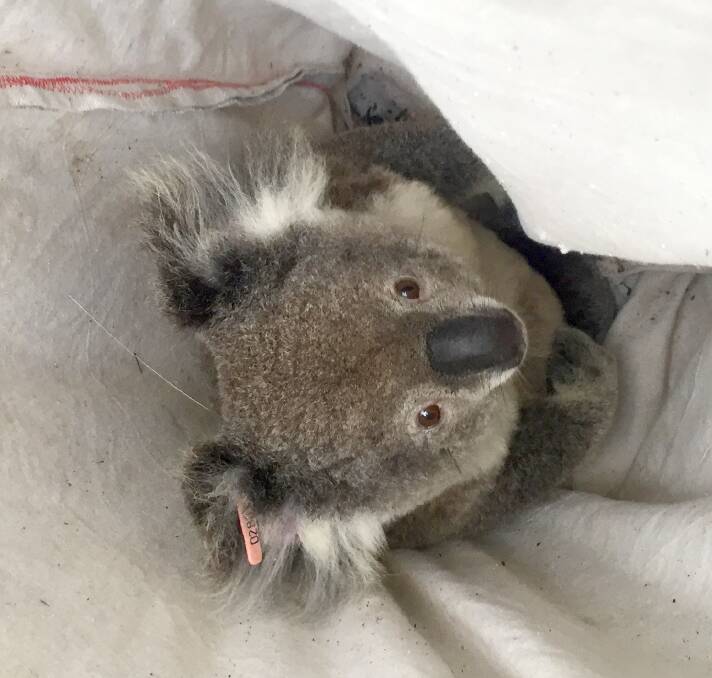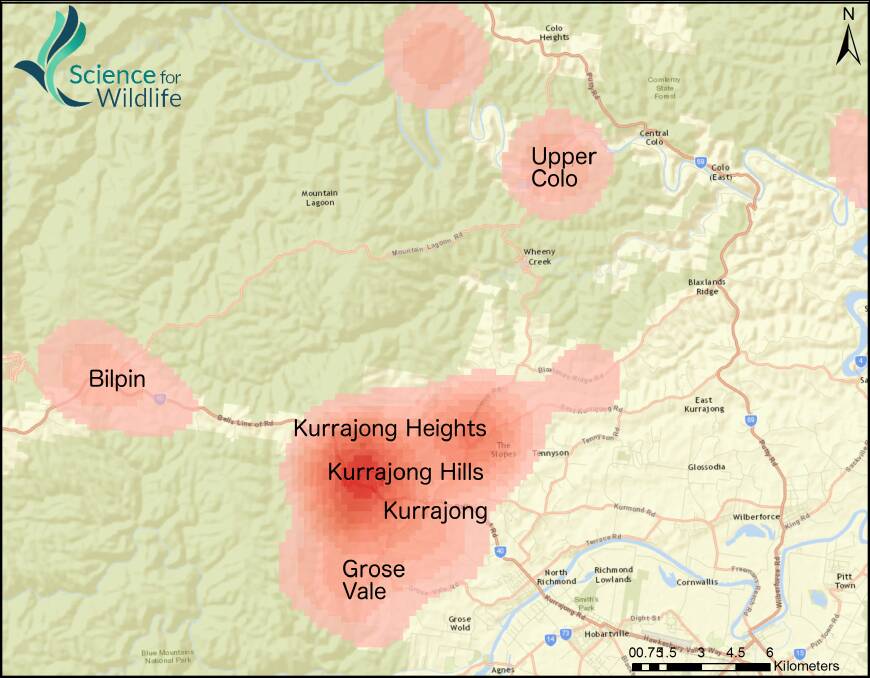
Koalas have been seen in increasing numbers around the Hawkesbury and now scientists have developed a local map that shows where koalas have been seen in the highest numbers near developed areas.
Create a free account to read this article
$0/
(min cost $0)
or signup to continue reading
The map has become an important tool to help to reduce threats to koalas who have moved outside of the National Park, as increasing numbers of koalas are appearing along roadsides and in people’s back yards.
The Blue Mountains Koala Project, run by not-for-profit organisation Science for Wildlife, has been focusing research efforts on South East Wollemi National Park and adjoining developed areas in the Hawkesbury since 2014, to find out more about the local koala population and the threats to it.
Dr Kellie Leigh, who runs the project, said koalas have been seen in increasing numbers from Grose Vale through Kurrajong and out to Blaxlands Ridge, Bilpin and Colo Heights.
“It's koala mating season right now throughout summer, so koalas are more active as they move longer distances to find mates,” Dr Leigh said.
“It’s also the time of year when one to two-year-old joeys will leave their mothers and venture out to find a place of their own.”
The map shows the main areas where koala sightings were recorded within 200m of a road or developed area. The areas with the most koala sightings appear darkest red, and those where fewer numbers of koalas were seen are in paler orange.

The risk hotspot map was produced with financial support from the NSW Office of Environment and Heritage’s Saving our Species Program, under the Iconic Koalas project.
Dr Enhua Lee from the Office of Environment and Heritage said the Blue Mountains Koala project was expanding their understanding of koala habitat use.
“Sharing what we learn from the project with the public is important and will hopefully help us conserve koalas in the area long into the future.”
Dr Leigh says the known risks to koalas in developed areas include vehicle collisions, attacks by domestic dogs and habitat fragmentation.
“If you live in the mapped area please keep an eye out for koalas as you drive, and keep your dogs locked up at night when koalas are more likely to be on the move.
“If you do see a koala we’d love to know about it - we're still working out which habitats koalas prefer as they have a lot of eucalypt species to choose from in this area. Your koala sighting information is really valuable to our research.”
If you see a koala you can report your sighting online at: www.scienceforwildlife.org/how-to-help/join-our-koala-project/ or via FaceBook at www.facebook.com/koalaspotters/

